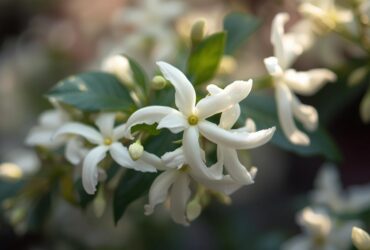From Forest to Fragrance: Perfumery is a captivating art that weaves together a symphony of scents, and among its most evocative and timeless elements are woody notes. These fragrances transport us to enchanted forests, evoke the warmth of polished wood, and stir emotions deep within. In this fragrant journey, we delve into the world of woody notes in perfumery, discovering the origins of these essences, the creative artistry of perfumers, and the emotions they evoke.
1. The Aromatic Alchemy of Woody Notes
Wood-derived fragrances are the embodiment of elegance and sophistication. These scents are extracted from various parts of trees, including the bark, roots, and heartwood. They can be classified into three main categories: woods, balsams, and mosses. Each type has a distinct aroma profile that contributes to the complexity of perfumes.
2. Cedarwood: The Regal Evergreen
Cedarwood Fragrance Profile
Cedarwood is an iconic woody note, often associated with strength and resilience. Its aroma is characterized by a warm, resinous, and slightly sweet scent. Perfumers use cedarwood to add depth and longevity to fragrances.
3. Sandalwood: The Creamy Elegance
Sandalwood Fragrance Profile
Sandalwood, known for its creamy and velvety aroma, has been revered for centuries. It exudes a gentle woody sweetness with hints of balsamic and spice. Sandalwood is a versatile note that adds a touch of luxury and sensuality to perfumes.
4. Vetiver: The Earthy Essence
Vetiver Fragrance Profile
Vetiver is an earthy and smoky note with a green, grassy undertone. Its complex scent profile evokes images of damp soil and fresh-cut roots. Vetiver is often used to anchor fragrances and provide a rich, grounding element.
5. Patchouli: The Enigmatic Elixir
Patchouli Fragrance Profile
Patchouli is a dark and mysterious woody note with earthy, sweet, and spicy facets. It’s been a favorite in perfumery for centuries, known for its depth and sensuality. Patchouli lends an exotic and seductive touch to fragrances.
6. Oakmoss: The Mossy Enchantment
Oakmoss Fragrance Profile
Oakmoss is a rich, mossy note with earthy, green, and slightly woody undertones. It imparts a sense of lush forest floors and damp woods. Oakmoss is a key ingredient in many classic chypre fragrances.
7. Creative Alchemy: Perfumers and Their Craft
The art of crafting woody fragrances lies in the hands of skilled perfumers. They carefully blend various woody notes with other ingredients to create harmonious compositions. The balance of top, middle, and base notes is crucial, as it determines the fragrance’s evolution on the skin.
8. Emotions and Associations: The Power of Woody Notes
Woody fragrances have a profound impact on our emotions and memories. Cedarwood can evoke feelings of strength and stability, while sandalwood may bring about a sense of calm and sensuality. Vetiver can ground us in the present moment, while patchouli’s enigmatic allure sparks intrigue.
9. Iconic Woody Fragrances: A Timeless Legacy
Numerous iconic fragrances have stood the test of time, thanks to their masterful use of woody notes. Classics like Chanel No. 5, Guerlain Shalimar, and Dior Fahrenheit continue to captivate and inspire, showcasing the enduring allure of woody accords.
10. Conclusion: The Enchantment of Woody Notes
Woody notes in perfumery are an enchanting journey from forest to fragrance, where nature’s elegance meets human creativity. The artistry of perfumers, the versatility of these scents, and the emotions they evoke make woody fragrances a beloved and timeless component of the perfumer’s palette. Whether you seek the regal elegance of cedarwood or the creamy sensuality of sandalwood, there’s a woody fragrance that can transport you to enchanted forests and evoke emotions that linger long after the scent has faded.
From Forest to Fragrance: Exploring the World of Woody Notes in Perfumery







Leave a Reply